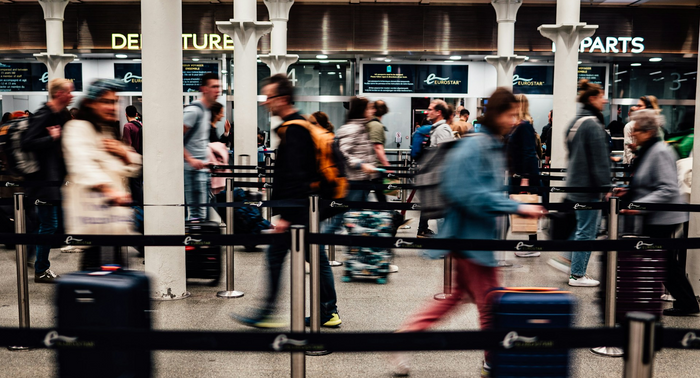What Is the Impact of the Government Shutdown on Air Travel, and Who Else Is Affected?

What happened and why?
On October 1, 2025, the US federal government entered a shutdown after Congress failed to agree on the budget for the 2026 fiscal year.
The shutdown was caused by disagreements in Congress over federal spending levels, with key points including cuts to foreign aid, health insurance subsidies, and measures for Medicaid funding. The Senate lacked the 60 votes required to advance either the Republican or Democratic budget proposals.
Democrats pushed to extend tax credits to lower health insurance costs and undo Medicaid cuts, while Republicans insisted on reducing government spending.
As of October 14, the shutdown is entering its third week.
What is a government shutdown?
A government shutdown refers to the federal government temporarily stopping or reducing many of its operations.
Hundreds of non-essential federal government programs and services stop their usual work until new funding is approved, while essential services related to safety and security continue to operate.
What is the impact on travel and tourism?
In short, the travel and tourism sectors, ranging from airlines and airports to national parks and museums, experienced immediate disruptions.
Any agency lacking funding must furlough its nonessential employees, such as park rangers or research scientists. Essential workers, including Transportation Security Administration (TSA), Federal Aviation Administration (FAA), and Air Traffic Control (ATC) staff, continue to work without pay.
Approximately 61,000 TSA agents and 13,200 FAA workers are working without pay, while more than 11,300 FAA controllers have been furloughed.
As air traffic controllers are also working without pay, more of them are calling in sick, creating a serious staffing crisis.
In the first week of the shutdown, Transportation Secretary Sean Duffy voiced concerns that controllers might miss their next paycheck on October 14. Although they were paid later, it didn’t cover the time worked since the shutdown began. TSA workers also received partial pay on October 10.
Meanwhile, many major attractions remain closed. This includes the Smithsonian museums, the National Zoo, monument elevators, and popular paid attractions such as Statue of Liberty ferry tours.
How are travelers affected?
For travelers, lines and wait times are growing. Travelers are advised to pack patience, recheck flight itineraries, and expect last-minute gate changes.
For example, on October 8, nearly 3,000 flights were delayed in the afternoon due to FAA slowdowns. By October 10, airlines reported a total of 22,000 flight delays for the week, including more than 6,400 delays and 470 cancellations on Friday alone.
Delays and cancellations are expected to continue or even increase until the government resumes full funding and employee pay.
What travel businesses are still operating?
Private sector travel companies operate normally because they run on customer revenue and do not rely on government funding.
Airlines, cruises, rental car services, hotels, travel management companies, and other businesses continue working despite the shutdown.
Visa and passport agencies are also processing applications, as they operate on a fee-based funding model.
Rail travel hasn’t been affected either: Amtrak, which runs over 300 trains daily across the country, has assured passengers that it will remain open for business.
How much money is the travel sector losing?
As of one week into the shutdown, the US travel economy lost over $1 billion in domestic travel spending due to flight cancellations, delays, and reduced airport operations resulting from the furlough of federal employees.
US domestic travel spending is estimated to be around $1.3 trillion in 2024 and is projected to grow to about $1.35 trillion in 2025. Losing $1 billion in a single week translates to a nearly 4 percent drop in travel spending for that week alone.
The US Travel Association forecasts that the country will continue to lose about $1 billion every week.
For comparison, during the 2018-2019 shutdown, travel was the hardest hit sector, accounting for nearly half of the GDP losses: Over $5 billion out of the total $11 billion GDP loss.
Additionally, some businesses will lose employees and will be forced to hire and retrain new staff once the shutdown ends, which will add to costs and operational challenges.
For example, during the previous shutdown, over 10 percent of TSA staff refused to remain on duty without pay, and many were seeking employment elsewhere to cover their lost income.
When will the shutdown end?
We can’t tell for sure at this point, but here’s how a similar situation has played out in the past.
The most recent government shutdown before 2025 was in late 2018–early 2019, spanning December 22, 2018, to January 25, 2019 (35 days).
It was prompted by a standoff over funding for President Trump’s border wall and was, to date, the longest in US history.
During that 35-day lapse, the lack of paychecks had an immediate impact on the travel sector. By the third week, TSA agents and air traffic controllers, working without pay, began calling in sick and quitting.
In January 2019, Miami International Airport even closed one of its terminals for a day because TSA officers were absent at twice the normal rate.
Air traffic controllers reported working 60‑hour weeks just to handle flights, and union leaders warned of safety concerns.
Congress eventually passed legislation to pay all furloughed workers retroactively, but in the meantime, airlines faced millions in lost revenue.
The shutdown finally ended when President Trump agreed to sign a temporary funding bill that reopened the government without allocating any funds for the border wall.
Photo by Wonder KIM on Unsplash